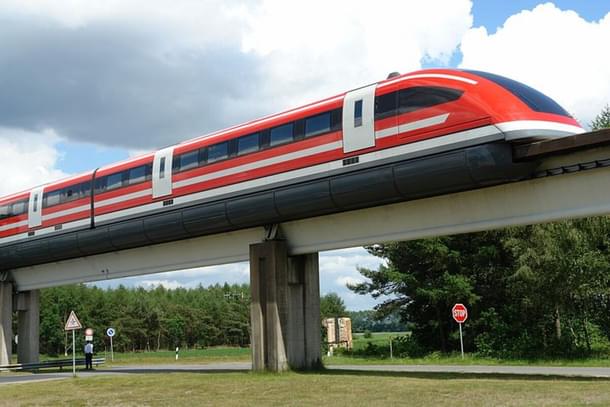Commentary
Why Additional Runways At Airports Can't Be A Substitute For Bullet Train Corridors
V Bhagya Subhashini
Jul 03, 2024, 11:12 AM | Updated 01:43 PM IST
Save & read from anywhere!
Bookmark stories for easy access on any device or the Swarajya app.


The debate on the need for a bullet train corridor in India, particularly the ambitious Mumbai-Ahmedabad High-Speed Rail (MAHSR) project, has intensified lately.
Recently, Kerala Congress stated that the costs associated with MAHSR project are exorbitant and that alternatives like adding another runway at an airport or constructing new airports could suffice.
According to them, the new Navi Mumbai International Airport is being constructed at a cost of Rs 16,700 crore. Adding a dedicated runway and terminal for travellers to Gujarat would cost an additional Rs 2,000 crore.
Constructing new airports at all 10-11 stops of the bullet train route would cost around Rs 24,000 crore. Therefore, the Ahmedabad-Mumbai travel issue could be resolved with a budget of Rs 15,000 to Rs 20,000 crore.
However, the connectivity and myriad benefits provided by a bullet train corridor far surpass the advantages of expanding airport infrastructure.
A dedicated runway and terminal for Gujarat-bound travellers would only serve those heading to major cities like Ahmedabad. In contrast, bullet trains can efficiently pick up and drop off passengers at various intermediate cities.
The concept of bullet trains originated in Japan in 1964, setting a precedent for high-speed rail that was soon emulated by France, China, and several other countries. Today, bullet trains operate in over 15 countries, symbolising economic power and growing technological prowess.
The High Speed Rail Corporation of India Limited, established in July 2012, was designed to develop and implement high-speed rail (HSR) projects in India.
In September 2017, Prime Minister Narendra Modi and Japanese Prime Minister Shinzo Abe laid the foundation stone for the Mumbai-Ahmedabad bullet train project.
The high-speed rail operating at 320 kmph will cover a 508.17 km distance between Mumbai and Ahmedabad in just about two hours. The total project cost is estimated to be Rs 1.65 lakh crore. It is scheduled to be completed by 2028.
The Indian Railways, with over 67,415 route km, is the backbone of the nation’s transportation system.
However, it is highly stretched on main trunk routes, carrying the bulk of passenger and freight traffic, with capacity utilisation on certain routes as high as 150 per cent.
This overcrowding has led to a slowdown in average speeds for both passenger and freight trains, shifting traffic from railways to less efficient road transport.
The resulting congestion on trunk routes increases turnaround times for goods, affecting manufacturing and highlighting logistic constraints as a significant factor in high manufacturing costs and reduced competitiveness.
A network of HSR would help release capacity on existing rail lines while enhancing passenger comfort and safety.
HSR would be powered by indigenous electric power, unlike cars and airplanes that rely on imported diesel, petrol, and aviation fuel. This shift would benefit the Indian economy and reduce its dependence on imported fuels and contribute in reduction of green house gases.
HSR would also facilitate congestion reduction at airports by curtailing short-haul flights, freeing up capacity for longer flights that improve air transport economics.
Recent examples from Japan, Europe, and China demonstrate how high-speed rail has revolutionised connectivity between towns and cities.
In China, 37,900 kilometres of high-speed rail lines span the country, connecting all major mega-city clusters. With maximum speeds of 350 kmph on many lines, intercity travel has been revolutionised, significantly reducing the dominance of airlines on the busiest routes.
A study by the London School of Economics and the University of Hamburg found that towns connected by high-speed rail saw their GDP rise by at least 2.7 per cent compared to those not on the route.
Increased market access through high-speed rail correlated with a rise in GDP; for each 1 per cent increase in market access, there was a 0.25 per cent rise in GDP. This was evident in the Cologne-Frankfurt line, which has been operational since 2002 with trains running at 300 km/h.
In conclusion, while expanding airport infrastructure might seem like a cost-effective alternative to Mumbai-Ahmedabad bullet train, the comprehensive benefits of high-speed rail — including economic growth, reduced environmental impact, enhanced connectivity, and improved efficiency — make it a superior long-term solution for India’s transportation needs.
V Bhagya Subhashini is a staff writer at Swarajya. She tracks infrastructure developments.




